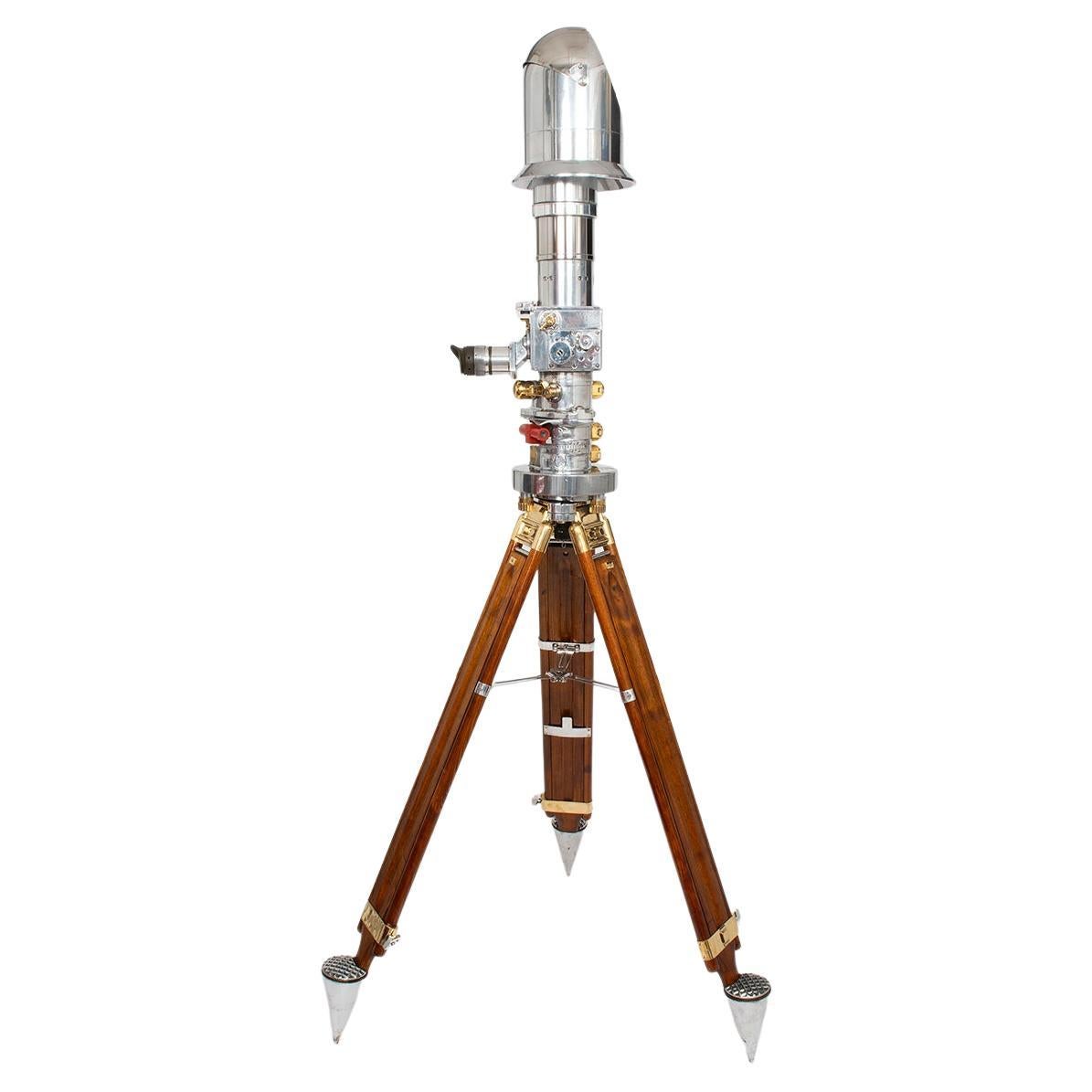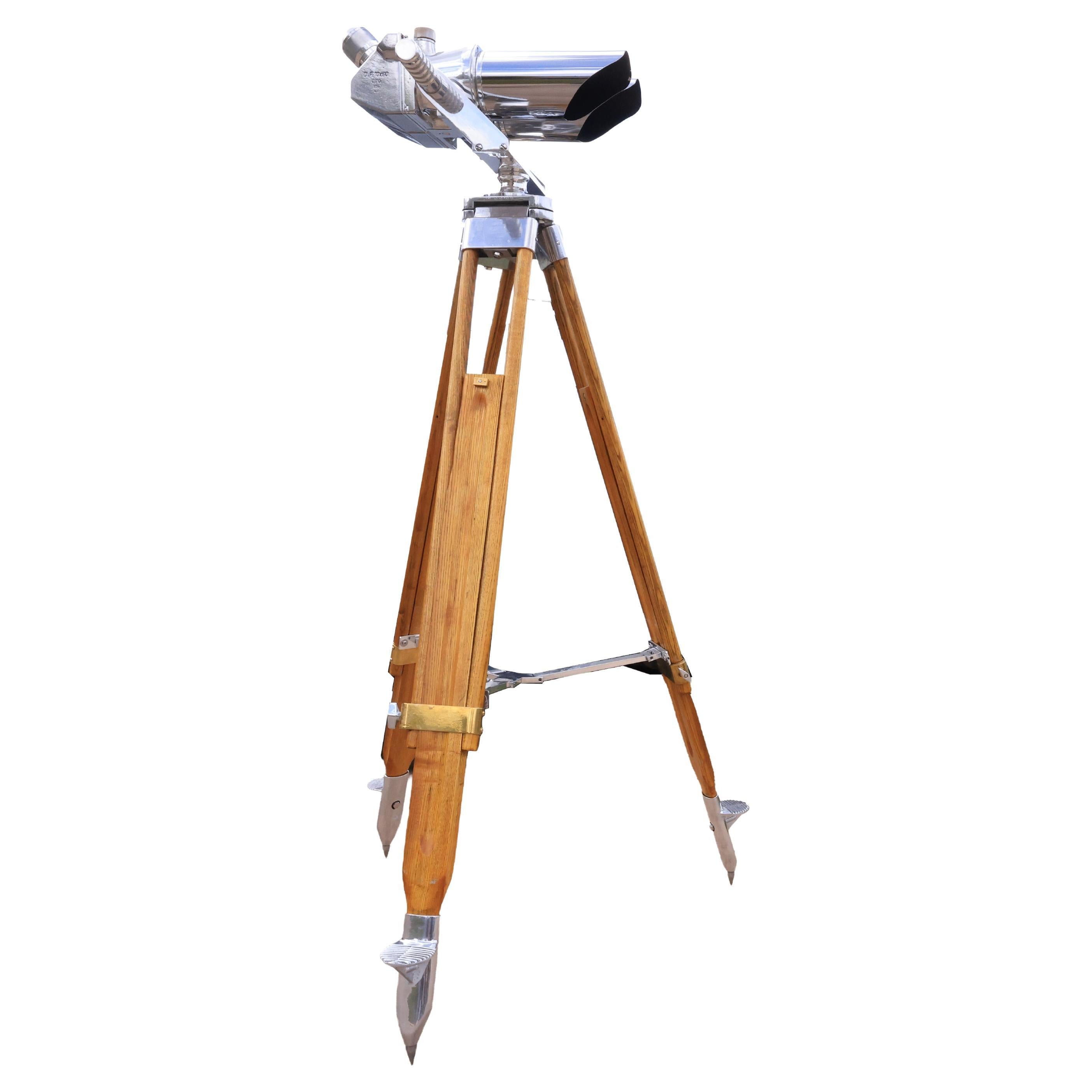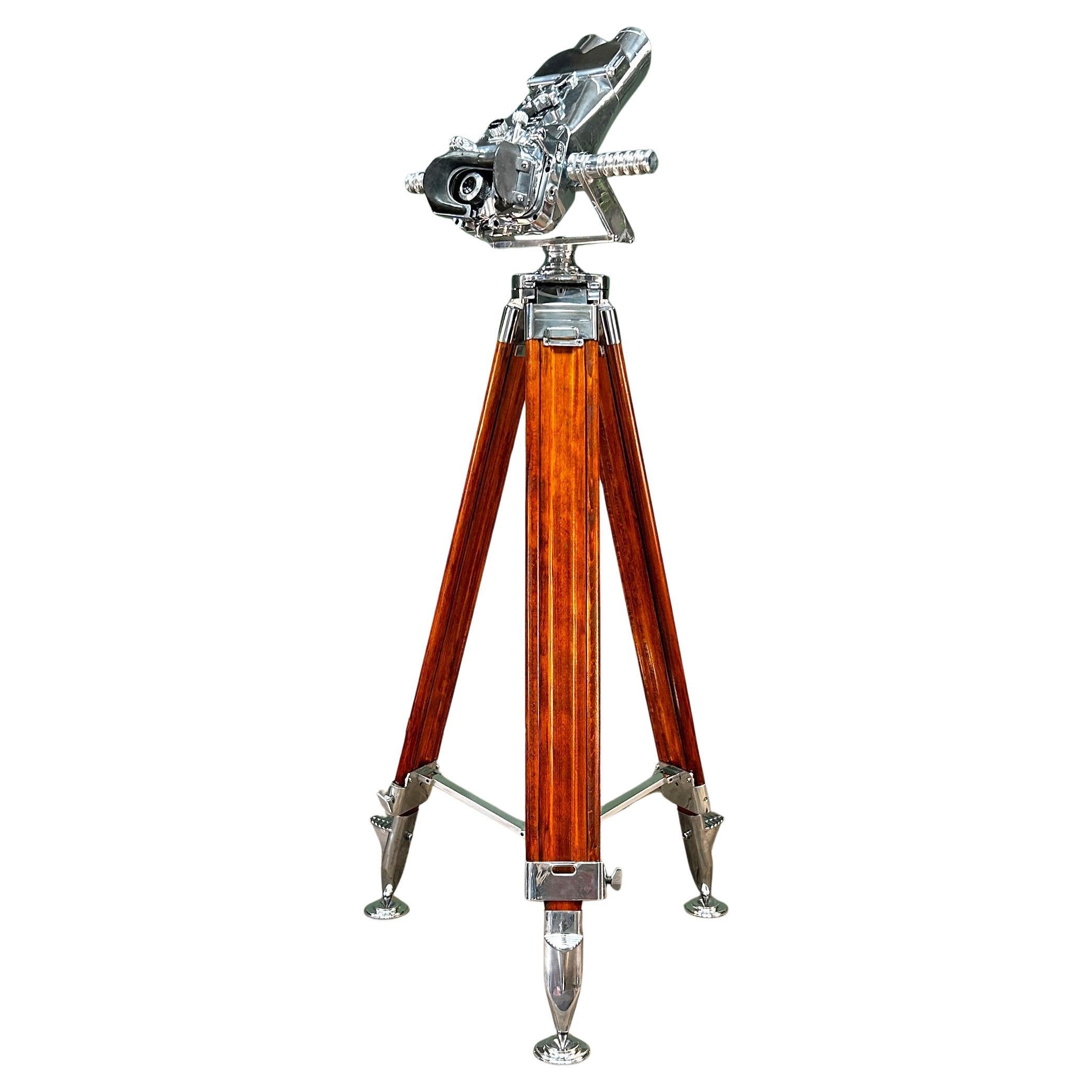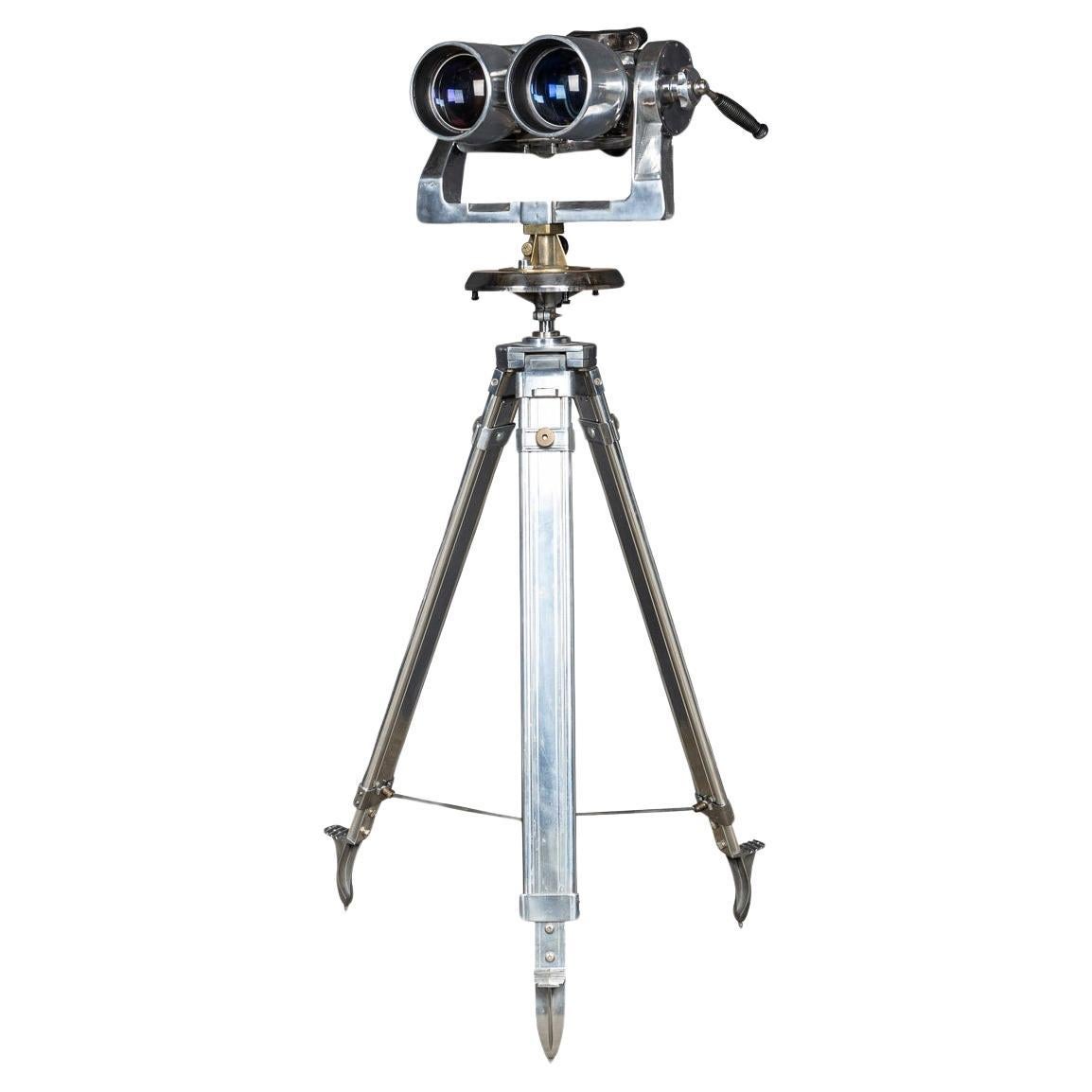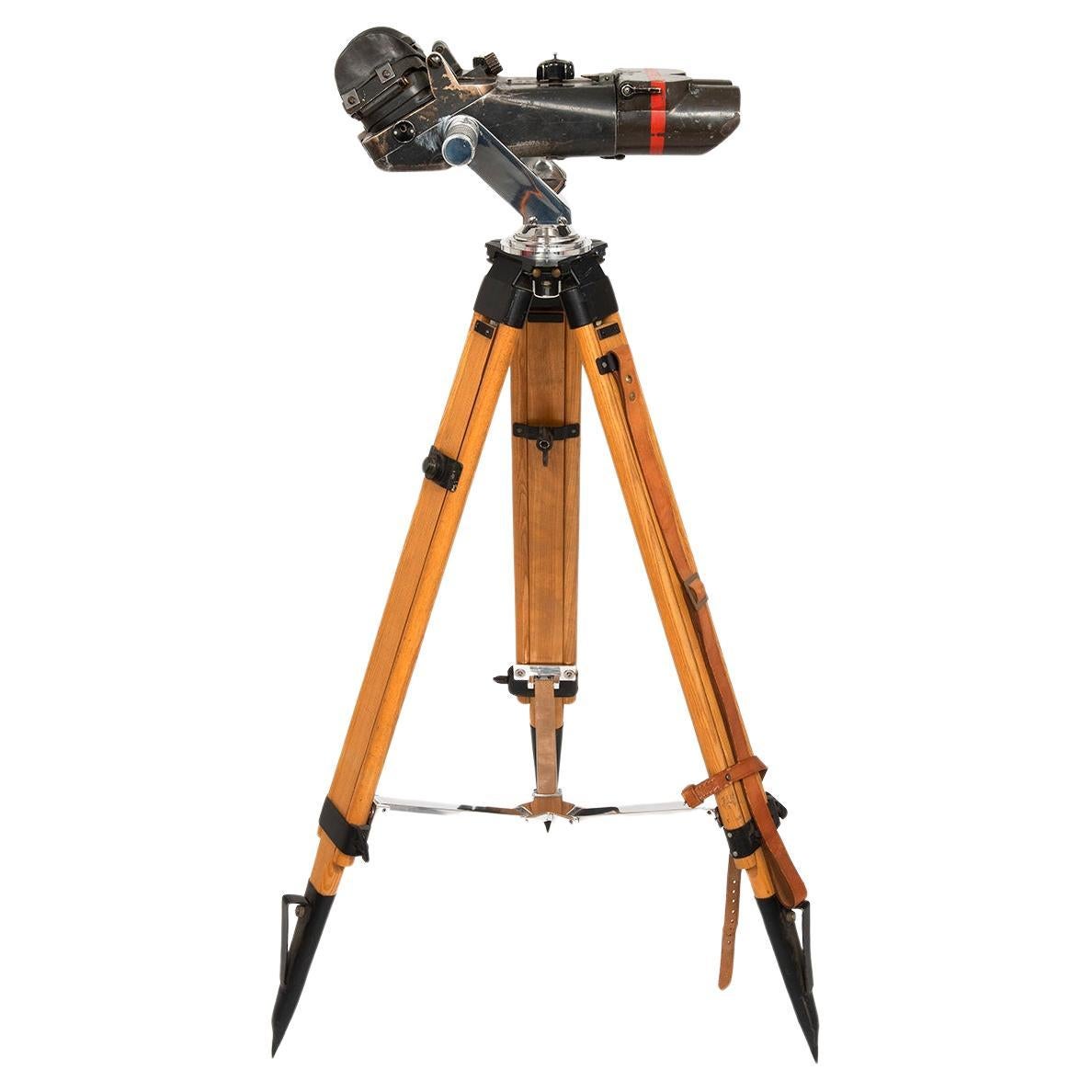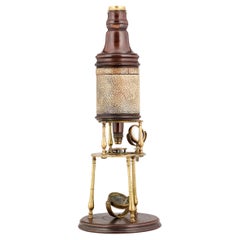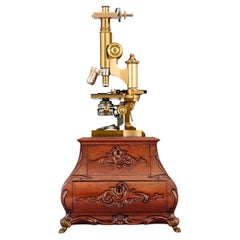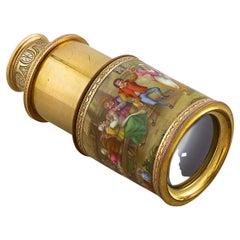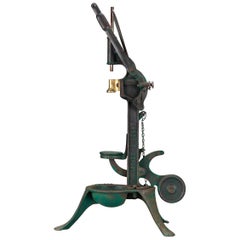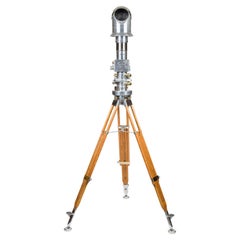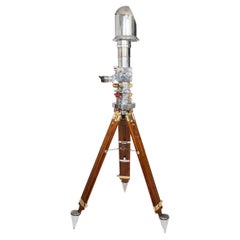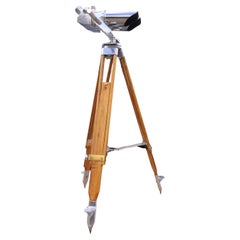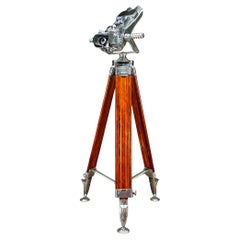Items Similar to Carl Zeiss Cold War Binocular Periscope
Want more images or videos?
Request additional images or videos from the seller
1 of 7
Carl Zeiss Cold War Binocular Periscope
$18,500
£14,025.54
€16,167.74
CA$26,054.28
A$28,892.27
CHF 15,180.75
MX$353,014.45
NOK 189,931.83
SEK 178,283.48
DKK 120,695.35
About the Item
Binocular Periscope
Carl Zeiss
Circa 1965
This exceptional binocular periscope, crafted by the renowned Carl Zeiss optical works, represents the pinnacle of mid-20th century German precision engineering and optical innovation. Used during the height of the Cold War to look over the Berlin Wall, this instrument's 10x magnification capability paired with its substantial 50mm objective lens delivers exceptional image clarity and brightness, even in low light.
Founded in Jena, Germany, in 1846, Carl Zeiss revolutionized optical instruments, earning a reputation for groundbreaking advancements in microscopes, cameras and military optics. By World War I, the company had become one of the most important camera producers in the world, pioneering technologies that remain influential today. After World War II, Soviet forces seized Zeiss’ engineering plans, allowing them to lay the foundation for Russia’s optical industry. Mid-century Soviet optics were direct reproductions of Zeiss designs, making original German-engineered pieces like this periscope exceptionally desirable. The Pentax tripod is a later addition.
Stamped "Carl Zeiss / 2313"
75" high x 26" diameter
- Creator:Carl Zeiss (Maker)
- Dimensions:Height: 75 in (190.5 cm)Width: 26 in (66.04 cm)Depth: 26 in (66.04 cm)
- Materials and Techniques:
- Place of Origin:
- Period:
- Date of Manufacture:Circa 1965
- Condition:
- Seller Location:New Orleans, LA
- Reference Number:Seller: 32-07501stDibs: LU891144042912
About the Seller
5.0
Recognized Seller
These prestigious sellers are industry leaders and represent the highest echelon for item quality and design.
Established in 1912
1stDibs seller since 2010
111 sales on 1stDibs
Typical response time: 9 hours
- ShippingRetrieving quote...Shipping from: New Orleans, LA
- Return Policy
Authenticity Guarantee
In the unlikely event there’s an issue with an item’s authenticity, contact us within 1 year for a full refund. DetailsMoney-Back Guarantee
If your item is not as described, is damaged in transit, or does not arrive, contact us within 7 days for a full refund. Details24-Hour Cancellation
You have a 24-hour grace period in which to reconsider your purchase, with no questions asked.Vetted Professional Sellers
Our world-class sellers must adhere to strict standards for service and quality, maintaining the integrity of our listings.Price-Match Guarantee
If you find that a seller listed the same item for a lower price elsewhere, we’ll match it.Trusted Global Delivery
Our best-in-class carrier network provides specialized shipping options worldwide, including custom delivery.More From This Seller
View AllCulpeper Compound Microscope
Located in New Orleans, LA
Compound Monocular Microscope
Edmund Culpeper
Circa 1730
This extraordinary early 18th-century microscope is a museum-worthy example of scientific innovation and craftsmanship made ...
Category
Antique 18th Century English Scientific Instruments
Materials
Brass
$48,500
Leitz Brass Compound Microscope
By E. Leitz
Located in New Orleans, LA
Brass Compound Microscope in Case
Ernst Leitz
Dated 1897
This rare late 19th-century compound microscope was crafted by the renowned optical firm Ernst Leitz GmbH of Wetzlar, German...
Category
Antique 19th Century Scientific Instruments
Materials
Optical Glass, Wood
Swiss Gold and Enamel Telescope
Located in New Orleans, LA
Scientifically advanced and exquisitely crafted, this rare 19th-century gold and enamel Swiss telescope is an item of exceptional luxury. The Swiss cre...
Category
Antique 19th Century European Scientific Instruments
Materials
Gold, Enamel
French Wine Corker
Located in New Orleans, LA
The fine art of wine-making is brought to life by this rare French wine corker. Beautifully crafted of wrought iron, this corker is specifically des...
Category
20th Century French Other Barware
Materials
Iron
$12,850
Holland Circle by Baumann and Kinzelbach
Located in New Orleans, LA
This intriguing item is almost certainly a Holland Circle by German scientific instrument makers Baumann & Kinzelbach. The Holland Circle, sometimes referred to as a Dutch Circle, was used in land surveying and is a precursor to the theodolite, an optical instrument for measuring angles. Baumann and Kinzelbach were based in Stuttgart, Germany, and in addition to crafting surveying instruments...
Category
Antique 19th Century German Scientific Instruments
Materials
Bronze
Silverplate Cannon With Wheels
Located in New Orleans, LA
This exceptional objet d'art is modeled after a cannon from the siege of Mafeking, a 217-day conflict in South Africa during the Second Boer War. It is composed of silverplate over c...
Category
20th Century English Victorian Models and Miniatures
Materials
Silver Plate, Copper
You May Also Like
Carl Zeiss cold war era 10 x 50 periscope binoculars
By Carl Zeiss
Located in London, GB
A cold war era Carl Zeiss Oberkochen 10 x 50 periscope binoculars, German, circa 1965.
Specifications: 10 times magnification, coated optics, objective diameter 50 mm, grey filter and drop down grid.
Original transport case. (included protective feet pads and rubber eye guards).
Dimensions of the case: 29 x 18 1/2 x 11 inches. (73 x 47 x 28 cm).
Mounted on an adjustable height tripod. Height of periscope in photographs: 77 inches.
This model of Zeiss periscope...
Category
Mid-20th Century German Industrial Scientific Instruments
Materials
Aluminum, Brass, Steel
German Karl Zeiss Periscope Binoculars, 10 x 50, Deep Magnification, Cold War..
By Carl Zeiss
Located in Canterbury, England
German cold war era periscope binoculars, 10x 50: These Carl Zeiss binoculars offer a deep magnification of 10x with optics of 50mm, providing detailed observation across a wide angl...
Category
Vintage 1960s Historical Memorabilia
Materials
Wood
WWII Carl Zeiss Kriegsmarine binoculars
By Carl Zeiss
Located in Aspen, CO
This is an exceptional 20th century WWII German 12x60 Kriegsmarine binocular, presented on an adjustable wooden or chrome Tripod. The binoculars were manufactured by the company Carl...
Category
Vintage 1940s Historical Memorabilia
Materials
Aluminum
1940's WW2 Carl Zeiss BLC Flak 12x60 Anti Aircraft Binoculars
By Carl Zeiss
Located in Leicester, Leicestershire
Carl Zeiss blc Flak 12 x 60 binoculars.
A beautiful set of WW2 binoculars in excellent condition made in Germany during World War 2. These were designed to be used in conjunction wi...
Category
Vintage 1940s German Industrial Historical Memorabilia
Materials
Aluminum
20th Century Soviet Cold War Anti Aircraft Binoculars c.1950
Located in Royal Tunbridge Wells, Kent
An impressive set of highly polished Cold War-era anti-aircraft binoculars from the former USSR, crafted in the 20th Century. Accompanied by a sleek and adjustable metal tripod, thes...
Category
Vintage 1950s Russian Other Scientific Instruments
Materials
Metal
Zeiss German Jumelles World `War 2, 12 x 60 Binoculars. Exceptional Optics.
By ZEISS
Located in Canterbury, England
Zeiss German Jumelles WW2 12 x 60 Binoculars .
These Zeiss Binoculars were primarily used by Luftwaffe Flak Artillery ground crews for spotting and identifying enemy aircraft and directing the crew served Rangefinders, Searchlights and Flak Cannons of the Anti-Aircraft batteries based around many German and occupied ports, cities and industrial centres. Due to their superb optics they naturally also proved useful on the battlefield for tactical observation and from the outset of 1939 were used in many theatres of war by the German Army.
Presented here are a very high quality set of binoculars, manufactured by Zeiss bearing the marker of 'Jumelles 12 x 60' , indicating that they would have been made between 1942 and 1944 in occupied France. This set are unpolished in original dark grey with red stripe and are fitted to a polished cradle. They are fitted with adjustable and variable light shades (marked farbglasser) for use in all daytime and darker light conditions and have the later war style rain shield...
Category
Vintage 1940s Other Historical Memorabilia
Materials
Aluminum
More Ways To Browse
World War Ii Furniture
World War Ii Germany
Vintage Cameras
Camera Tripod
Vintage Military Tripod
Carl Zeiss Vintage Lens
Carl Zeiss Periscope
Antique Civil War Sword
Antique Slot Machines
Antique Turkish Coins
Coronation Flag
Mexican Colonial Antiques
Trench Art Vase
Voting Box
Antique Knife Sheath
Memorabilia Queen Elizabeth Ii
Peugeot Coffee
Tree Topper

